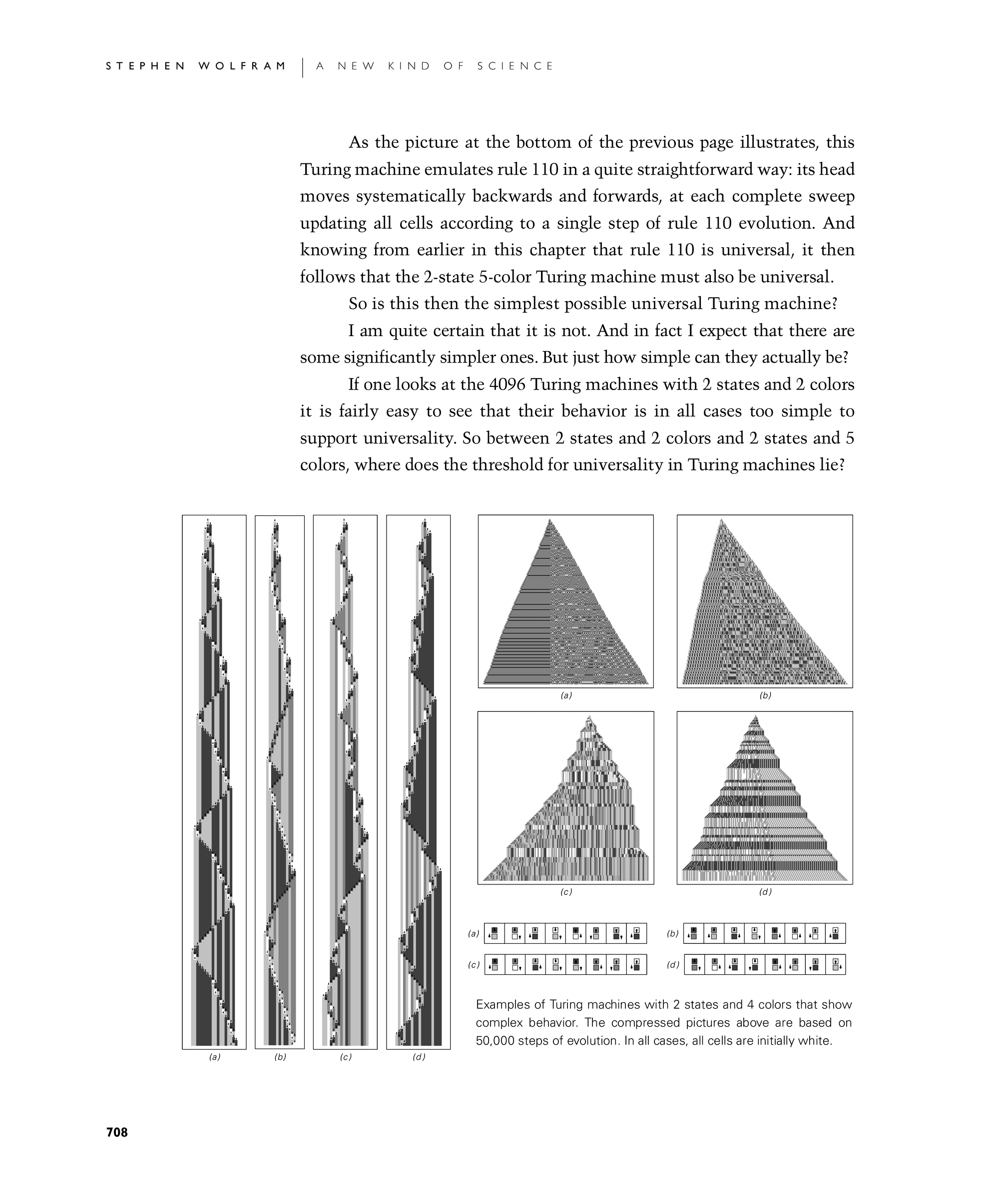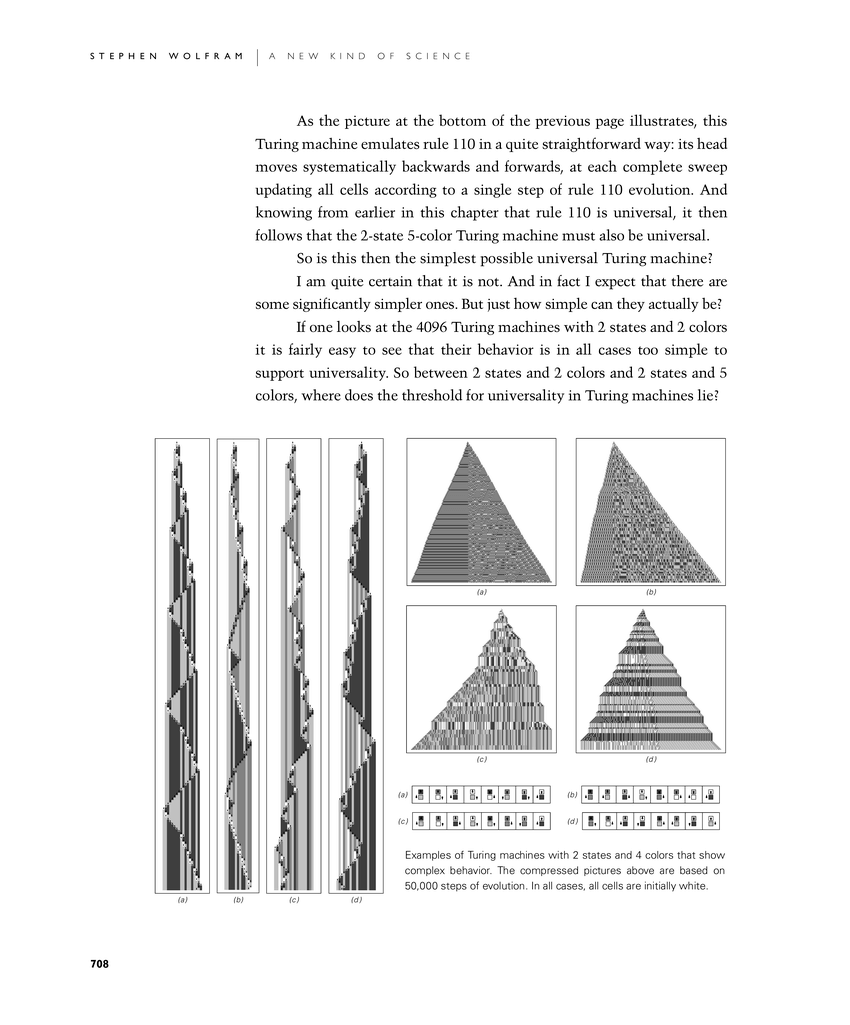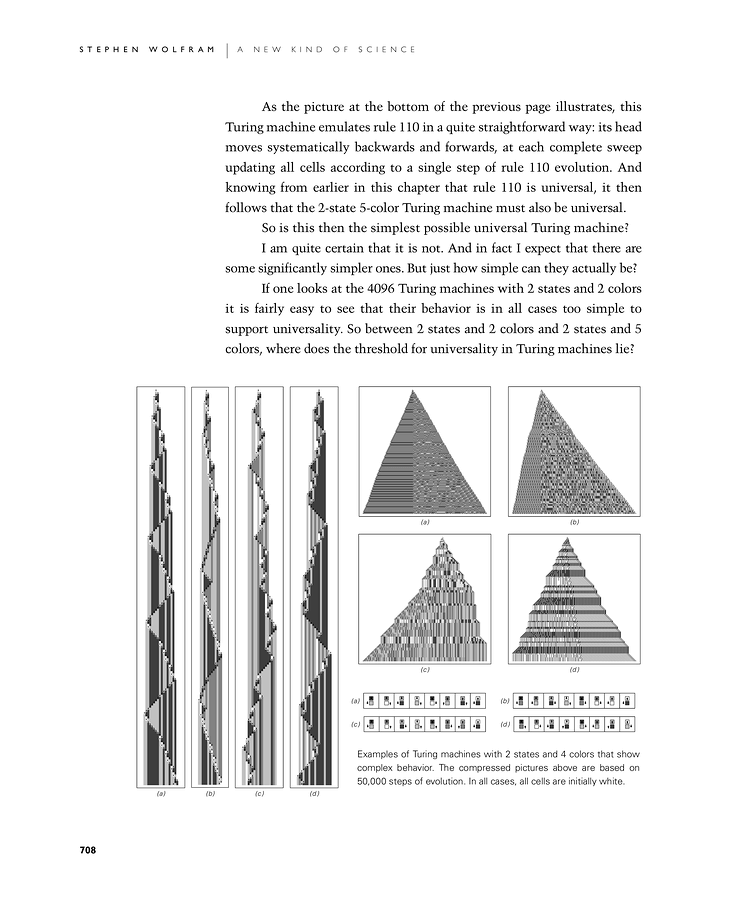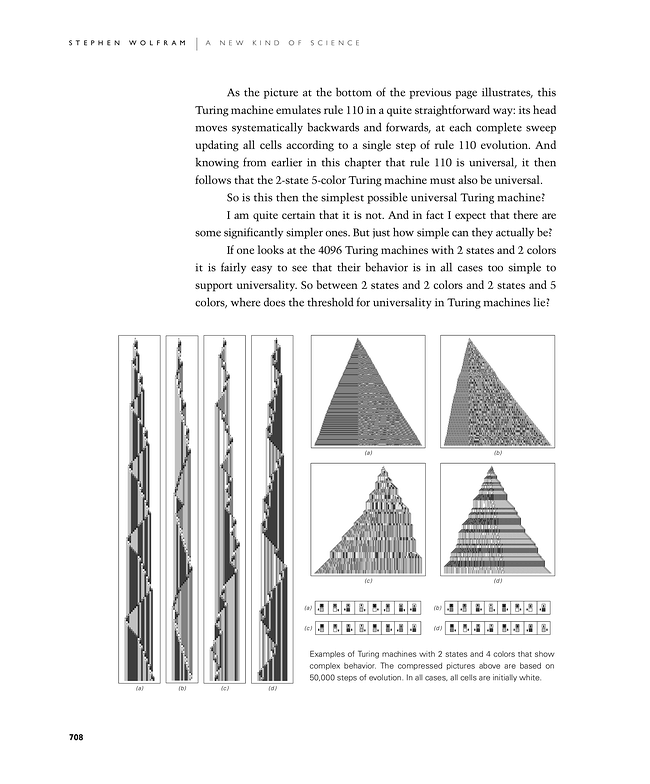As the picture at the bottom of the previous page illustrates, this Turing machine emulates rule 110 in a quite straightforward way: its head moves systematically backwards and forwards, at each complete sweep updating all cells according to a single step of rule 110 evolution. And knowing from earlier in this chapter that rule 110 is universal, it then follows that the 2-state 5-color Turing machine must also be universal.
So is this then the simplest possible universal Turing machine?
I am quite certain that it is not. And in fact I expect that there are some significantly simpler ones. But just how simple can they actually be?
If one looks at the 4096 Turing machines with 2 states and 2 colors it is fairly easy to see that their behavior is in all cases too simple to support universality. So between 2 states and 2 colors and 2 states and 5 colors, where does the threshold for universality in Turing machines lie?
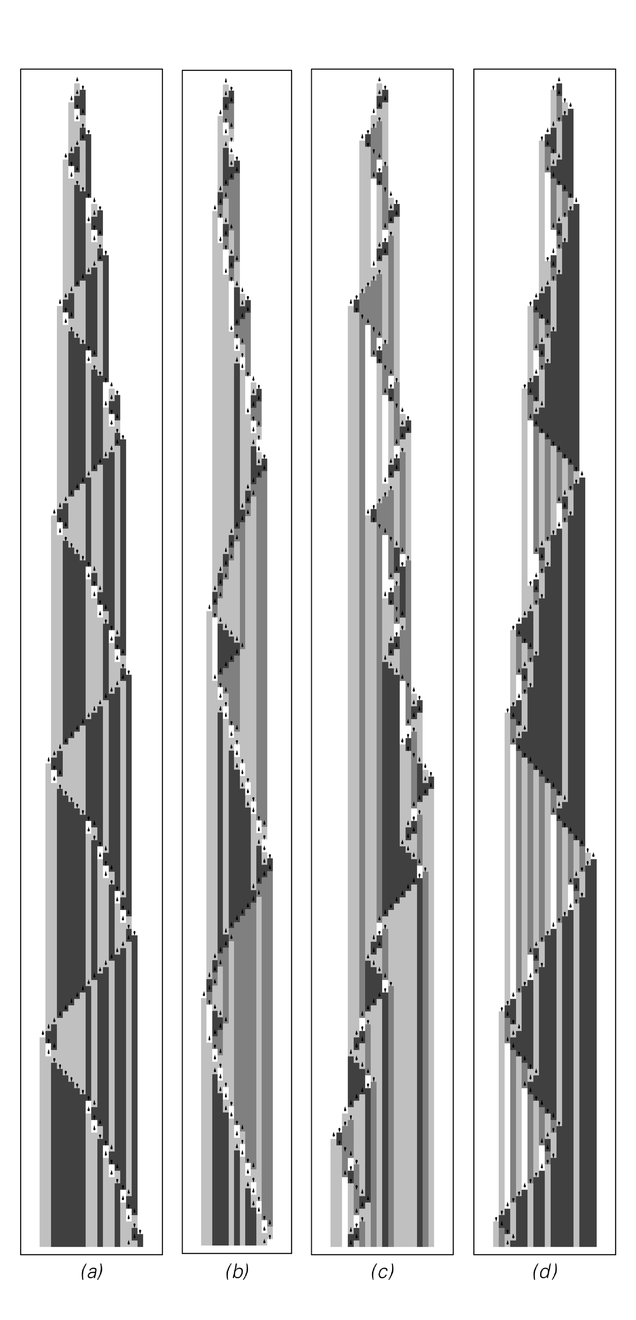 | 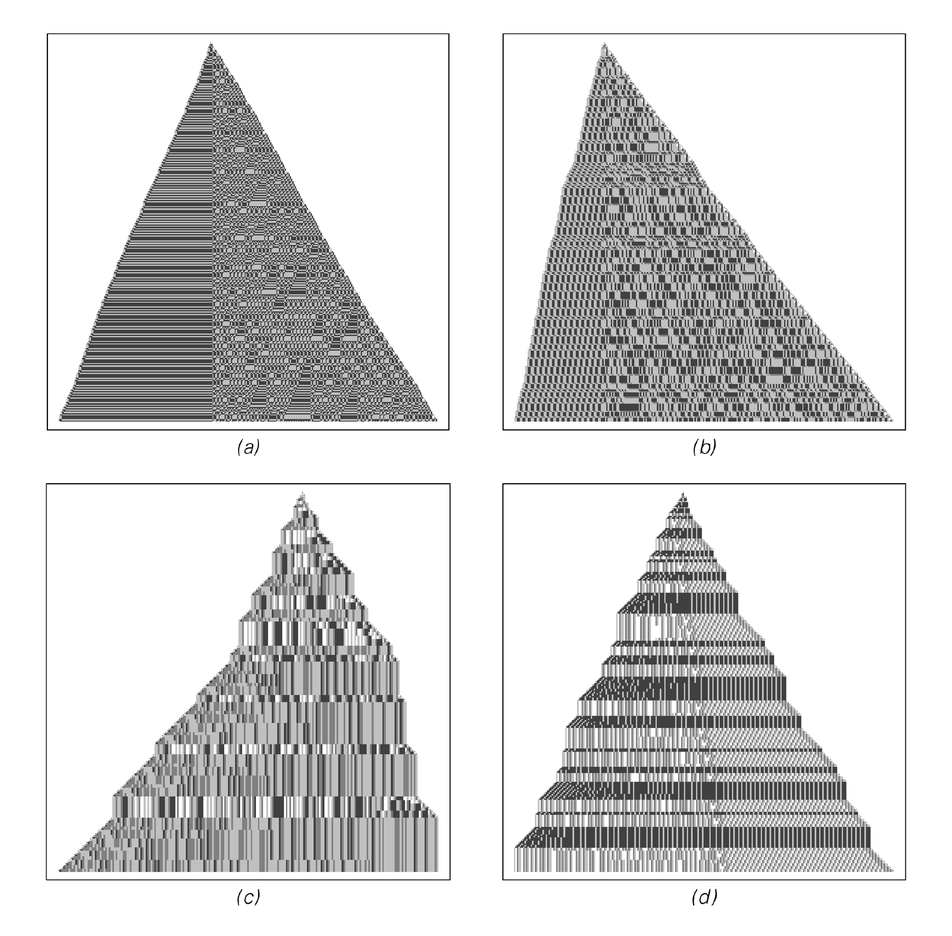  |
Examples of Turing machines with 2 states and 4 colors that show complex behavior. The compressed pictures above are based on 50,000 steps of evolution. In all cases, all cells are initially white.
